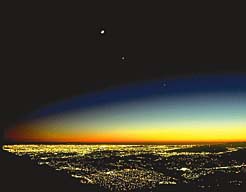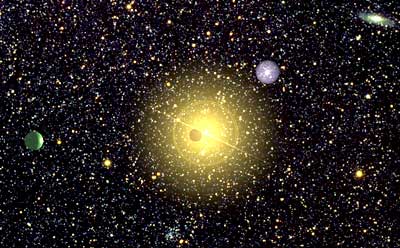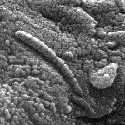
|
Major Planets
- Two types: A total of 8 planets, four
relatively "small", "closely
spaced", rocky ones with few moons (if any) and no rings, in
the inner Solar System; Four large, widely spaced, mostly gaseous
ones, all with many moons and rings, in the outer Solar System.
- Terrestrial Planets: Mercury
at 0.4 AU (seen always close to the Sun, the smallest of the
8 planets, heavily cratered); Venus at 0.7 AU (the "Morning
Star" or "Evening Star", the Blue Planet, extremely hot
under the atmosphere); Earth and its Moon (also a heavily cratered surface,
the only celestial object visited by humans); Mars at 1.5 AU (the Red
Planet,
the
most explored one – currently has both orbiters
and rovers on the surface – with two small moons).
- Jovian Planets: Jupiter at 5
AU (the king of the planets, with at least 60 moons and a centuries-old
storm, the Great Red Spot); Saturn at 10 AU (with the most complex
set of rings and many moons – and the Cassini orbiter currently
around it); Uranus at 20 AU and Neptune at
30 AU (two bluish giants).
- Why are they different? It
mostly boils down to their different distances from the Sun
|


_214x220.jpg)
_150x160.gif)

![]()